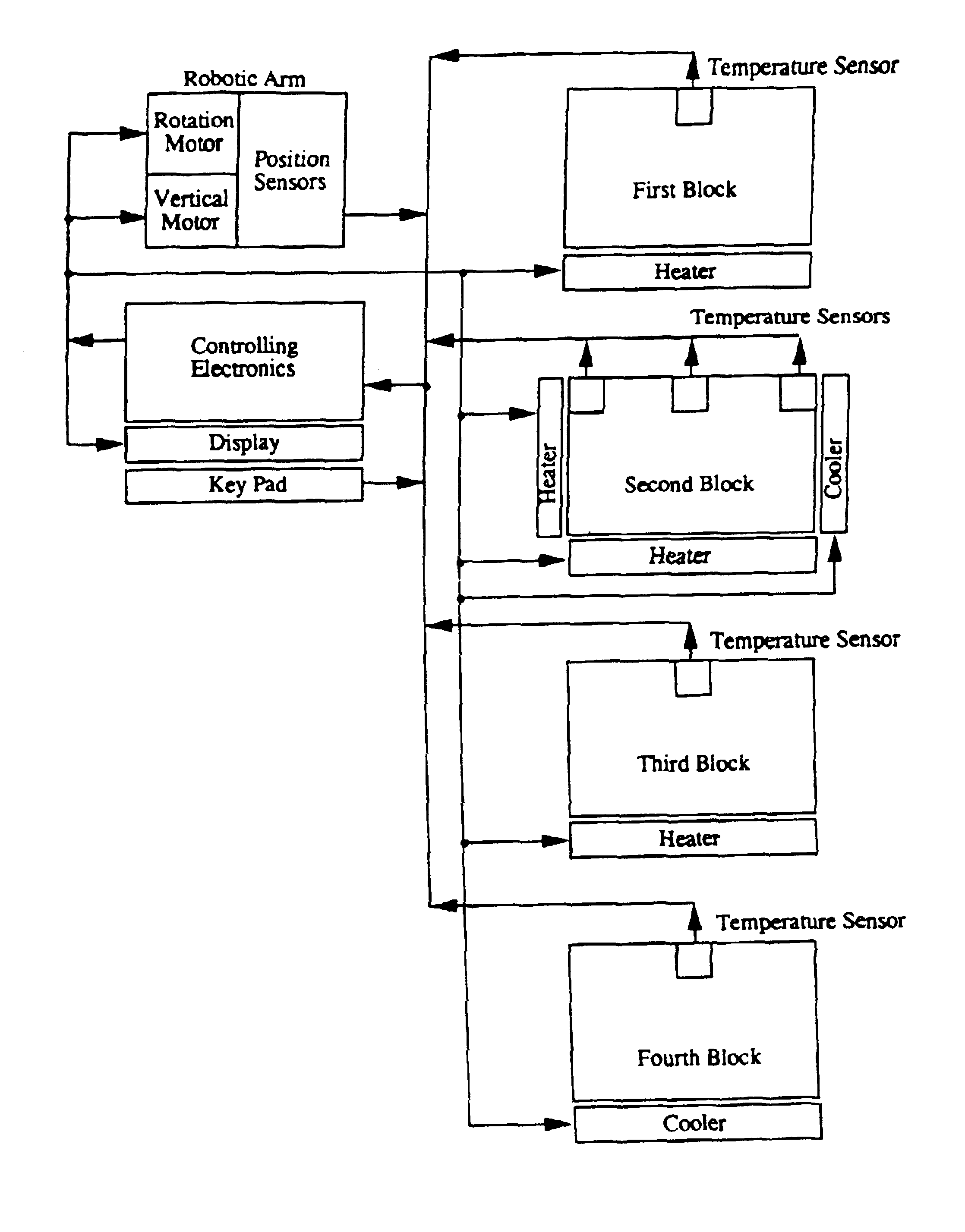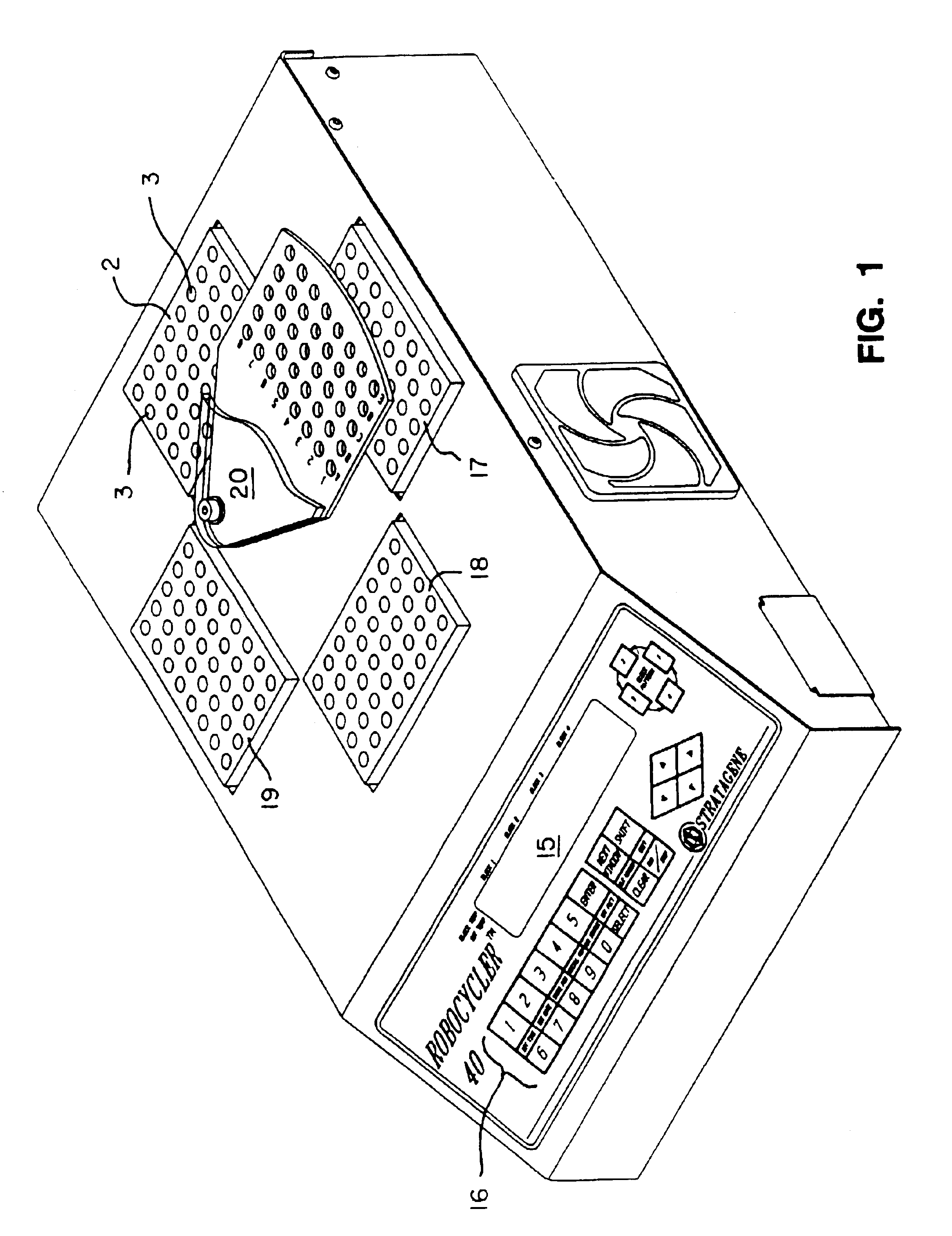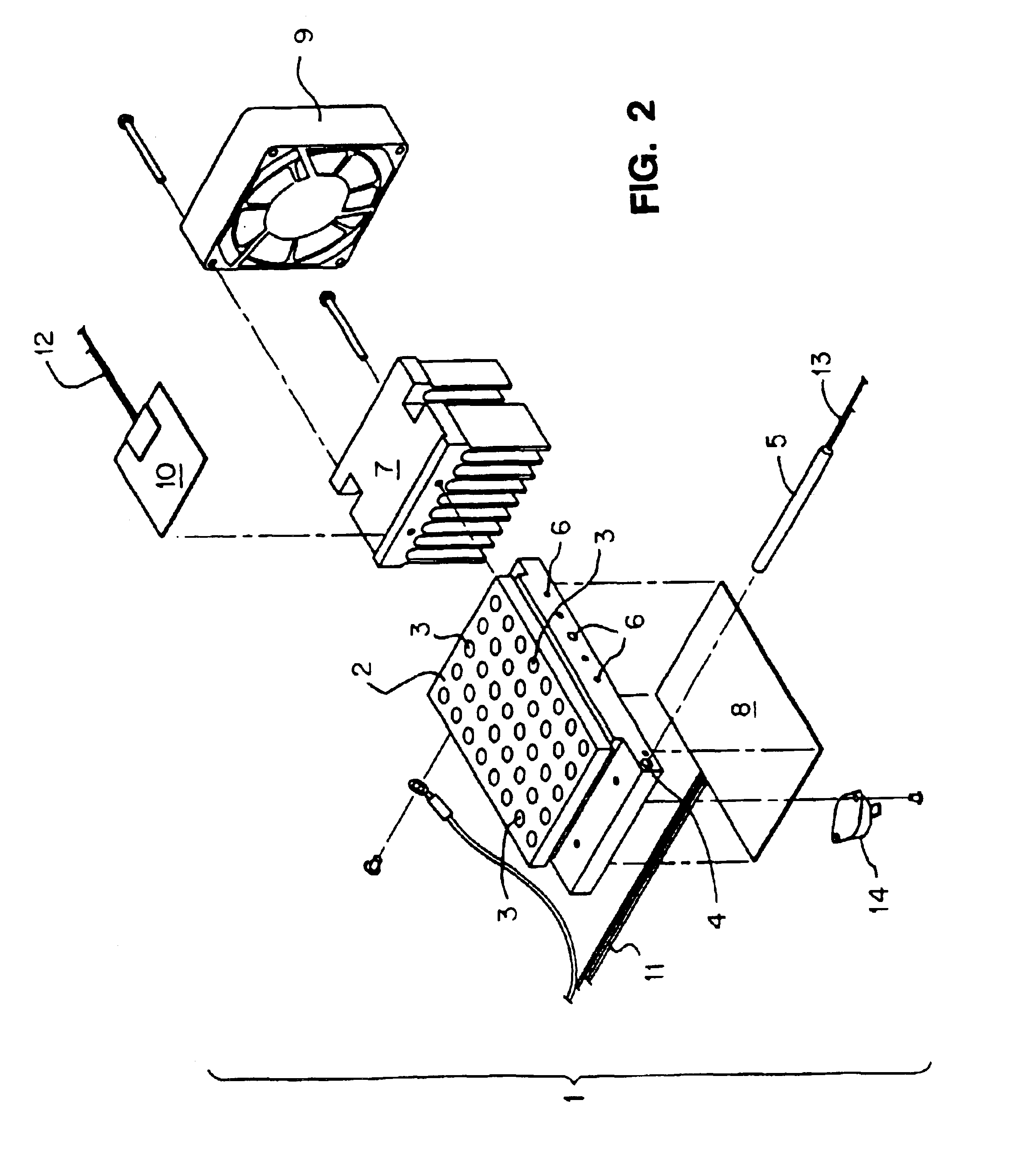Thermal cycler including a temperature gradient block
a technology of temperature gradient and cycler, which is applied in the direction of lighting and heating apparatus, laboratory glassware, instruments, etc., can solve the problems of insufficient heating, difficult task, and inability to determine the optimum temperature for each of the various steps of any reaction system
- Summary
- Abstract
- Description
- Claims
- Application Information
AI Technical Summary
Benefits of technology
Problems solved by technology
Method used
Image
Examples
example 1
Use of the Gradient Thermal Cycler for the Polymerase Chain Reaction
[0056]High temperature primer extension testing of the thermal gradient system of the invention was carried out using two model primer / template systems. These two systems exhibit significantly variable extension product yields depending upon the annealing temperature used during the extension process. Primer / template set #1 amplifies a 105 bp region of the human Gaucher gene, while set #2 amplifies a 540 bp region of the human fucosidase gene. The thermal gradient system of the invention contains a gradient block that allowed primer extension using an optimal annealing temperature range of 42 to 56° C.
Methods and Materials
[0057]Primer extension reactions were carried out using the gradient block of the invention. Primer / template test set #1 consisted of a genomic human DNA template and two 22 mer oligomers yielding a 105 bp extension product. The sequence of primer A was 5′ CCTGAGGGCTCCCAGAGAGTGG 3′9 (SEQ ID NO:1). ...
example 2
Use of the Gradient Thermal Cycler for the Ligase Chain Reaction
[0062]Ligase chain reaction (LCR) is a recently described DNA amplification technique that can be used to detect trace levels of known nucleic acid sequences. LCR involves a cyclic two step reaction which is performed in a DNA thermal cycler machine. The first step is a high temperature melting step in which double stranded DNA unwinds to become single stranded. The second step is a cooling step in which two sets of adjacent, complementary oligonucleotides anneal to the single stranded target DNA molecules and are ligated together by a DNA ligase enzyme. The products of ligation from one cycle serve as templates for the ligation reaction of the next cycle. Thus, LCR results in the exponential amplification of ligation products.
Materials and Methods
[0063]The materials used in this experiment were obtained from Stratagene, La Jolla, Calif. The optimal temperature for the second step of the LCR cycle, in which the oligonuc...
PUM
| Property | Measurement | Unit |
|---|---|---|
| temperature | aaaaa | aaaaa |
| temperature | aaaaa | aaaaa |
| temperature | aaaaa | aaaaa |
Abstract
Description
Claims
Application Information
 Login to View More
Login to View More - R&D
- Intellectual Property
- Life Sciences
- Materials
- Tech Scout
- Unparalleled Data Quality
- Higher Quality Content
- 60% Fewer Hallucinations
Browse by: Latest US Patents, China's latest patents, Technical Efficacy Thesaurus, Application Domain, Technology Topic, Popular Technical Reports.
© 2025 PatSnap. All rights reserved.Legal|Privacy policy|Modern Slavery Act Transparency Statement|Sitemap|About US| Contact US: help@patsnap.com



